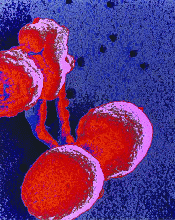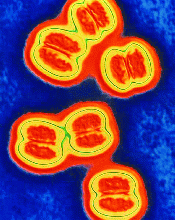Archives
Meningococcal Meningitis
The department also organized a similar kind of meeting for all the Medical Officers of the District. Apart from the meeting with the MO and the field staff of the health department, Dr. Pohsnem also informed that the Department had also made arrangements for advertisement through print and electronic media to sensitize the people of the district; particularly the villagers, about the do’s and don’ts that are necessary to control the spread of the disease.
meeting with the MO and the field staff of the health department, Dr. Pohsnem also informed that the Department had also made arrangements for advertisement through print and electronic media to sensitize the people of the district; particularly the villagers, about the do’s and don’ts that are necessary to control the spread of the disease.
Dr. E. Chyne, Officer-in-charge of Integrated Diseases Surveillance Project, Jaintia Hills district informed this scribe that of all the villages in the district, Wahiajer is the only village in which the disease has almost reached an epidemic stage. Altogether 16 cases were reported from this village alone, so field workers had to work day in and day out to treat the infected. Dr. Chyne also said that because of the situation in which the Wahiajer was in, the Department organized administering of Chemoprophylaxis in mass on 17 April 2008. Of the 5619 people of the village, a total of 5042 were administered Chemoprophylaxis. Dr. Chyne also informed that as on 23rd April 2008, total number of meningococcal meningitis cases in the whole of Jaintia Hills was 89; number of suspected cases is 61, total number of confirmed cases is 21 and of these figures there are six suspected deaths and one confirmed death case in the whole district.  When asked whether the Government was able to contain the spread of the diseases in the district, Dr. Pohsnem said that the life of the bacteria responsible for the disease is very much influenced by the earth’s temperature, it can neither tolerate heat nor cold, it requires a moderate climate to thrive, therefore with the advent of the summer, we can say that the effect of the diseases has subsided. Dr. Chyne also added that the life cycle of this bacteria is 10 to 12 years, which means that it can reoccur only after a gap of ten to twelve years.
When asked whether the Government was able to contain the spread of the diseases in the district, Dr. Pohsnem said that the life of the bacteria responsible for the disease is very much influenced by the earth’s temperature, it can neither tolerate heat nor cold, it requires a moderate climate to thrive, therefore with the advent of the summer, we can say that the effect of the diseases has subsided. Dr. Chyne also added that the life cycle of this bacteria is 10 to 12 years, which means that it can reoccur only after a gap of ten to twelve years.
Dr. Chyne informed this scribe that the number of reported cases of meningococcal meningitis has declined day-by-day, yet in spite of that, the department is still on high alert. Dr. Pohsnem expressed his concern that at the peak of the epidemic, there are reported cases of pharmacies taking advantage of the situation by increasing the price of the medicines. Even quacks in the interior of the district were having a field day Dr. Pohsnem lamented.

